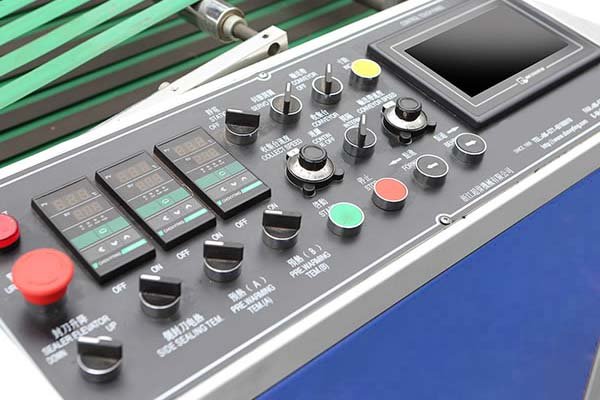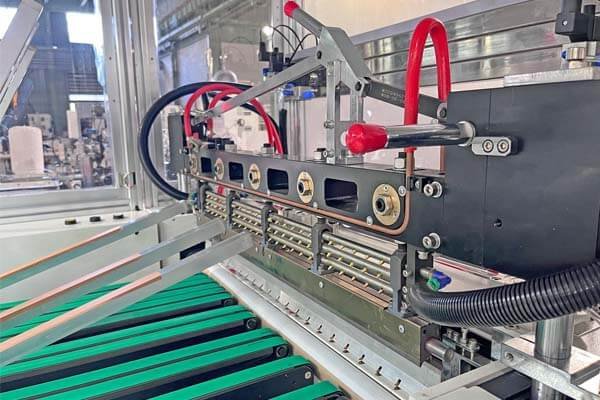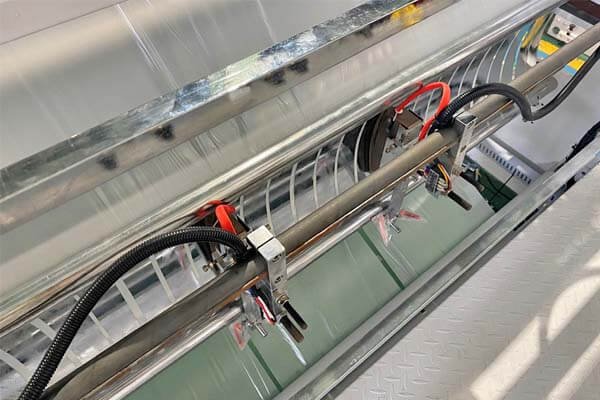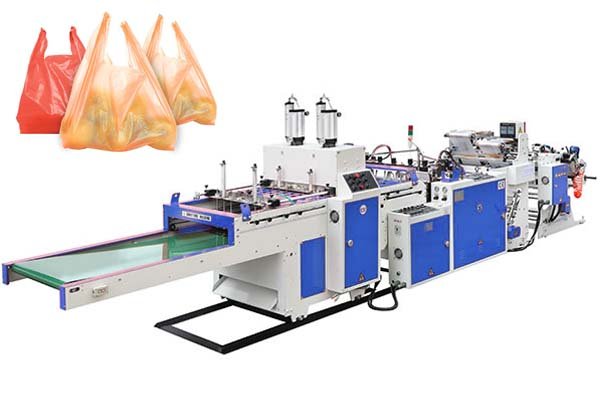
Selecting the right courier bag making machine is a critical investment for your business. The wrong machine can lead to downtime, quality issues, and wasted resources. To make an informed choice, it’s essential to match the machine’s capabilities with your operational goals and budget.
There are four key factors to consider when choosing a courier bag machine: production speed, material compatibility, automation level, and overall budget. Aligning these with your specific needs will help you get the best value for your investment.
At BagMec®, we understand that this machine is the core of your production line. It impacts your throughput, product quality, and profitability. Whether you’re a startup with limited space or a large-scale logistics company looking for high-speed output, choosing the right model makes all the difference.
This guide outlines what you need to look for, explains how speed affects profitability, details material options, and provides a breakdown of budgeting. The goal is to help you make a decision that meets today’s needs and supports future growth.
What Features Matter Most in a Courier Bag Machine?
Machine features directly impact performance and product quality. Choosing the right ones ensures consistent, efficient production.
Key features to look for include reliable sealing technology, a high-speed servo-driven system, a PLC touchscreen for ease of use, and a tension control system that ensures smooth film handling without defects.

At BagMec®, every feature is engineered to solve real-world production problems—from startups needing simplicity to large manufacturers requiring precision and uptime.
Sealing Technology: Critical for Bag Strength
The sealing system determines how securely the bag holds its contents during transit.
- Hot Bar Sealing: Uses heated bars to fuse plastic layers. Ideal for LDPE and HDPE. Reliable and widely used.
- Impulse Sealing: Provides quick heat bursts. Suitable for thinner films and uses less energy.
- Ultrasonic Sealing: Uses high-frequency vibrations to bond layers. Produces strong, clean seals and supports multi-layer or coated films.
BagMec® machines use reinforced sealing bars for consistent, tear-resistant seams from the first bag to the last.
Automation & Control Systems
A machine’s control system affects usability and consistency.
- PLC with Touchscreen: Makes it easy to control speed, bag length, and sealing time. Our UI supports multiple languages.
- Servo Motors: More accurate and energy-efficient than stepper motors. BagMec® servo systems can cut energy use by up to 30%.
Material Handling and Tension Control
Consistent film tension ensures correct bag length, wrinkle-free seals, and minimal waste.
BagMec®'s Smart Tension Control automatically adjusts for slight variations in roll speed or film thickness, reducing defects and scrap.
Feature Comparison Table
| Feature | Basic Model (Startup-Friendly) | Mid-Range Model (Growth-Oriented) | Advanced Model (High-Volume) |
|---|---|---|---|
| Control System | Basic PLC + Buttons | Advanced PLC + Touchscreen | IoT PLC + Remote Diagnostics |
| Drive System | Stepper Motors | Hybrid Servo/Stepper | Full Servo Motor System |
| Sealing System | Standard Hot Bar | Reinforced Hot Bar | Ultrasonic or Custom |
| Tension Control | Manual or Basic Auto | Smart Tension Control | Predictive Tension Control |
| Add-ons | None | Optional Punching/Printing | Integrated QR Code Printing |
How Does Production Speed Affect ROI?
Speed isn’t just about volume—it directly impacts profitability and market responsiveness.
Faster production means more output per hour, lower labor cost per unit, faster order turnaround, and a stronger competitive edge—all contributing to higher ROI.

For one of our logistics clients, increasing machine speed was the only viable option to meet growing demand without expanding floor space or hiring more operators. The result: more output, lower unit cost.
Output & Profit Comparison
Example: producing 1,000,000 courier bags
- Machine A (Standard Speed): 1,500 bags/hour → 667 hours required
- Machine B (BagMec® High-Speed): 2,500 bags/hour → 400 hours required
Machine B saves 267 hours, enough to produce an additional 667,500 bags in the same time frame—leading to more revenue from the same machine.
What About Quality & Maintenance?
- Quality: BagMec® machines are engineered to maintain accuracy at high speeds using high-carbon steel components and laser-aligned cutting tools.
- Maintenance: High-speed operation is demanding, so we build for durability. All machines undergo a 72-hour continuous test. IoT features support predictive maintenance.
ROI Table: Hypothetical Scenario
Assuming $0.01 profit per bag
| Metric | Machine A (1,500/hr) | Machine B (2,500/hr) | BagMec® Advantage |
|---|---|---|---|
| Annual Run Time | 2,000 hours | 2,000 hours | Same labor input |
| Annual Output | 3 million bags | 5 million bags | 2 million more bags |
| Annual Profit | $30,000 | $50,000 | $20,000 more profit |
| Machine Cost | $23,000 | $35,000 | Higher upfront cost |
| Payback Period | ~9.2 months | ~8.4 months | Faster ROI |
What Materials Can Modern Courier Bag Machines Handle?
Material selection affects the bag’s strength, appearance, sustainability, and cost. The machine must support both current and future material needs.
BagMec® machines work with LDPE, HDPE, co-extruded films, and eco-friendly options like biodegradable PLA.

In one case, we developed a custom solution for a U.S. brand using 100% PLA. That required precise temperature and tension control—capabilities built into our design.
Common Plastic Films
- LDPE: Soft, flexible, good tear resistance. Widely used in e-commerce.
- HDPE: Stiff and puncture-resistant. Used for documents and sensitive goods.
- Co-extruded Film: Multi-layered, often with black interior and white exterior. Offers opacity and branding surface.
Growing Need for Sustainable Materials
- Recycled Content: May vary in consistency. Requires machines with adaptive control systems.
- PLA (Polylactic Acid): Compostable, plant-based film. Needs precise sealing temperature control.
Material Compatibility Table
| Material | Properties | Machine Requirements | Use Case |
|---|---|---|---|
| LDPE | Flexible, soft | Standard heaters | Clothing, general parcels |
| HDPE | Stiff, strong | Strong cutters | Documents, durable bags |
| Co-ex Film | Opaque, printable | Smooth tension control | Branded and secure bags |
| PLA | Compostable | Precise temperature control | Eco-conscious brands |
How to Budget for a Courier Bag Making Machine?
Budgeting should factor in both upfront costs and long-term operational expenses to assess total cost of ownership (TCO).
A BagMec® courier bag machine typically costs $23,000–$35,000 USD, depending on speed, automation level, and custom features.
We don’t just quote a price—we ask what problem you're solving. The lowest-priced machine isn’t always the best value if it leads to frequent breakdowns or inconsistent output.
Initial Costs
- Machine Price: Varies by model and specs.
- Customization: QR printing, punching units, etc.
- Shipping & Logistics: Costs depend on your location and chosen incoterms.
- Installation & Training: Optional services ensure correct setup and operator training.
Operational Costs
- Energy: Power consumption can vary; our servo systems reduce usage by up to 30%.
- Materials: Cost of film (LDPE, HDPE, PLA, etc.).
- Labor: Operator wages—automated models can reduce supervision needs.
- Maintenance: Spare parts and routine servicing.
TCO Example Table
| Cost Category | Basic Model (~$23,000) | Advanced Model (~$35,000) | Notes |
|---|---|---|---|
| Machine Price | $23,000 | $35,000 | Reflects features & speed |
| Shipping & Install | $3,000 | $4,000 | Estimated |
| Annual Energy | $4,000 | $2,800 | Servo systems save power |
| Labor | $30,000 | $30,000 | One operator assumed |
| Annual Output | 3M bags | 5M bags | Higher productivity |
| Cost per 1,000 Bags | ~$19.00 | ~$14.36 | Advanced model more efficient |
Conclusion
Choosing the right courier bag making machinerequires a clear understanding of your needs across speed, material handling, features, and total cost. By evaluating these factors objectively, you can select a machine that enhances productivity, improves quality, and delivers long-term value.






